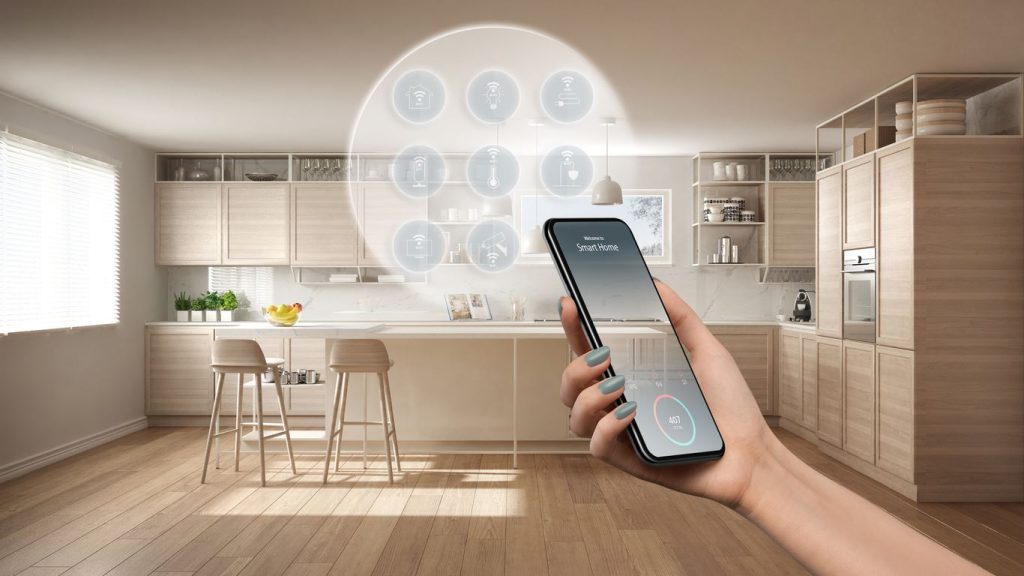Home Technology has exponentially changed our lives over the last two-hundred years. If your mind was blown with the introduction of the internet in 1983, think about those who witnessed the first light bulb illuminate in 1879. From the mass adoption of home television sets in the 50s, to the microwave oven revolutionising cooking in the 70s.
Kerry Mullany, from Smart Energy says “In a blink of an eye, we’ve gone from the beginning of smart homes in the early 2000s, to nearly two-thirds (6.3 million) of Aussie households having at least one smart home appliance or product, today. With that maths, it’s clear that Australians have embraced home innovations like Steve Irwin embraced wildlife. From energy-efficient appliances and solar panel installations to AI home systems, home technology has made our lives more comfortable, efficient and connected.”
Now, given the pace and magnitude of these technological advancements, one might wonder: What’s next for our homes and why is it important to adopt the latest home technologies?
100 PER CENT HOME ELECTRIFICATION
Embracing electrification is pivotal. It not only boosts energy efficiency but also paves the way for incorporating affordable renewable sources like solar. Numerous homes are now replacing traditional gas systems with energy-saving electric alternatives. Such shifts include transitioning from gas guzzling heating systems to efficient heat pumps and swapping gas stoves with induction cooktops. As Australians continue to prioritise sustainability, fully electrified homes are set to become standard.
SOLAR POWER AND BATTERIES
Climate change awareness has redefined our electricity consumption. Solar panel technology has evolved, with modern rooftop systems now more resilient and efficient. For those aiming for state-of-the-art home technology that cuts both carbon footprint and energy bills, combining home electrification with a solar and battery system is the way forward.
VIRTUAL POWER PLANTS
VPPs represent a leap into the future. These energy networks interconnect individual solar panels and batteries, offering benefits like reduced energy bills and a chance to sell surplus energy. As solar becomes more mainstream, VPPs might just redefine our perception of a typical energy plan.
ELECTRIC VEHICLES
With Tesla’s 2008 Roadster pioneering the shift, electric cars have seen a significant surge. The Electric Vehicle Council’s annual State of EVs report stated that electric cars have made up 8.4 per cent of all new car sales for 2023. The transition to EVs is being propelled by both governmental initiatives and stricter emission standards.
EV CHARGERS
Future homes are almost guaranteed to feature EV chargers. As the number of EVs grows, homes will need to evolve. Integrating EV chargers into smart home ecosystems will be paramount, allowing for scheduled charging during off-peak hours and leveraging lower electricity rates. Moreover, EVs connected to charging stations can even serve as backup power sources during blackouts. Investing in dedicated EV charging stations is no brainer when future-proofing your home.
ADOPTING TECHNOLOGY NOW
Considering history, we know technology will continue to evolve. Questions arise: why invest in an EV charger without an EV? Or get a solar battery now? Well, with the government’s current subsidies and rebates, now might be the optimal time to invest in green technology.
“Waiting for the “next big thing” might seem tempting. But remember, the first smartphone emerged in 1992, and it wasn’t until 15 years later that the iPhone came along. Plus, products like solar batteries are now designed to receive software updates, ensuring they stay current for years to come.” added Mullany
The rapid evolution of home technology underscores the need to adopt current innovations. From home electrification and solar power to VPPs and EVs, the benefits are immense. Future homes will inevitably feature these advancements. Seize today’s opportunities to save money now and down the line, and equip your home for a brighter tomorrow.



